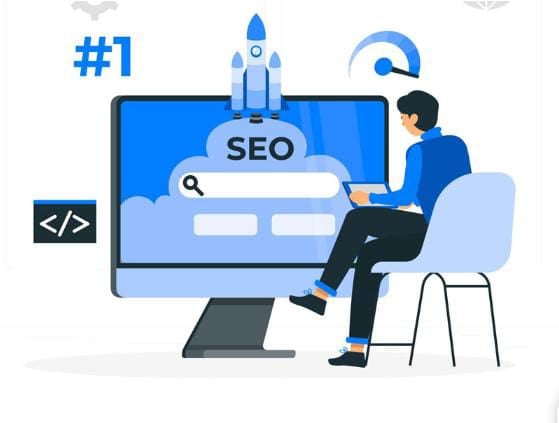
Rank Higher Click More – Internal SEO Best Practices
In today’s digital landscape, ranking high on Google is the ultimate goal for businesses and website owners. After all, the higher your website ranks, the more likely it is to be seen by potential customers. Achieving a top position on search engine result pages (SERPs) involves a complex mix of strategies and techniques, but one of the most crucial aspects is internal SEO. Internal SEO, sometimes referred to as on-page SEO, is all about optimizing your website’s content and structure to make it more appealing to search engines.
Let’s delve into the world of internal SEO and explore the best practices that can help you outrank your competitors and gain more clicks.
Keyword Research and Optimization
Effective internal SEO begins with comprehensive keyword research. You need to identify the keywords and phrases that your target audience is using to search for the products or services you offer. Tools like Google Keyword Planner and SEMrush can be invaluable for this task. Once you’ve identified your target keywords, it’s essential to optimize your content with these keywords strategically.
- Keyword Placement: Incorporate your target keywords in the title, meta description, headers, and throughout your content. But remember, overusing keywords can harm your rankings. Aim for a natural, readable flow.
Content Quality and Relevance
High-quality, relevant content is the cornerstone of any successful internal SEO strategy. Google’s algorithms prioritize content that provides value to users. Here are some key aspects to consider:
- Unique Content: Ensure your content is unique and original. Duplicate content can lead to penalties from search engines.
- Relevance: Your content should directly address the needs and questions of your target audience. The more relevant it is, the higher the chances of ranking well.
- Comprehensive Information: Long-form content that thoroughly covers a topic tends to perform better in search results. It’s essential to provide in-depth information that addresses various aspects of your topic.
Optimize for User Experience (UX)
Search engines, like Google, take user experience into account when ranking websites. A positive user experience encourages visitors to stay on your site longer and engage with your content. To improve UX:
- Mobile Optimization: Ensure your website is mobile-friendly, as mobile usability is a ranking factor.
- Page Speed: Faster-loading pages tend to rank better. Compress images, minimize code, and use a content delivery network (CDN) to enhance loading times.
- User-Friendly Navigation: Make your site easy to navigate with clear menus, breadcrumbs, and internal linking to help users find relevant content.
Optimize Your URLs
URL structure plays a more significant role in SEO than you might think. Use clear, concise, and keyword-rich URLs. Avoid long, convoluted URLs that are difficult for both search engines and users to understand.
Internal Linking
Effective internal linking can boost your SEO efforts by directing both users and search engines to relevant content. Here’s how to do it right:
- Anchor Text: Use descriptive anchor text that gives users and search engines a clear idea of where the link will lead.
- Link to Relevant Content: Connect your content to related articles or pages on your site, providing a deeper dive into the topic for interested readers.
- Sitemap: Create and submit a sitemap to Google to help search engines crawl and index your site more effectively.
Meta Tags and Meta Descriptions
Meta tags, including title tags and meta descriptions, play a vital role in on-page SEO. These snippets are what users see on the SERPs. Craft compelling titles and meta descriptions to entice clicks.
- Title Tags: Keep your title tags concise and include your target keywords. Use action verbs to prompt users to click.
- Meta Descriptions: Write informative and engaging meta descriptions that provide a sneak peek into the content and encourage users to visit your site.
Image Optimization
Images are an integral part of web content. Properly optimizing images can improve your website’s SEO:
- Alt Text: Add descriptive alt text to all images. This not only helps visually impaired users but also provides more context for search engines.
- File Size: Compress images to reduce load times without sacrificing quality.
Schema Markup
Implementing schema markup can make your website more attractive in search results. It adds structured data that enhances the way your site is displayed in the SERPs.
- Rich Snippets: Use schema markup to enable rich snippets, which can include star ratings, product prices, and more, making your search results more eye-catching.
Regular Content Updates
Fresh content indicates to search engines that your website is active and relevant. Keep your content up-to-date by regularly adding new articles or updating existing ones.
Analytics and Monitoring
Effective SEO is an ongoing process. Regularly monitor your website’s performance using tools like Google Analytics and Search Console. Make data-driven decisions to improve your rankings continually.
Explore our site 内部SEO対策 for expert SEO tips and valuable knowledge. We provide the latest insights and strategies to boost your online presence. Our user-friendly resources cover everything from on-page optimization to technical SEO. Stay updated with our regularly refreshed content, and join our engaged community of SEO enthusiasts. Elevate your online success starting today!
In conclusion, internal SEO is a pivotal element in your quest to rank higher on Google. By focusing on keyword optimization, content quality, user experience, and other best practices, you can position your website for greater visibility and increased organic traffic.







